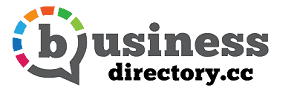Email marketing has been around forever. It’s the most effective way of connecting with your prospects, nurturing them, and turning them into customers. When you have started strategizing towards the growth of your business, email marketing should be a major part of your overall marketing plan. Small businesses have a lot to achieve from email marketing but yet many of them ignore it, losing many opportunities. We like Mailchimp for email marketing or Constant Contact.
Whether you are running an online business, small shop, or business website, email is a great way to engage your current customers. If you look at the stats the research also supports prioritizing email marketing.
-
- 73% of millennials prefer communications from businesses to come through email.
- 44% of email recipients made at least one purchase last year based on a promotional email.
- 89% of marketers say email serves as their main channel for lead generation.
- 7 in 10 people say they made use of a coupon or discount from a marketing email in the prior week.
- 59% of marketers say email is their biggest source of ROI.
- Email marketing drives $44 for every $1 spent. (if you need help driving sales with email marketing we are happy to help, contact us here https://businessdirectory.cc/contact-support/
1. Start with defining your audience.

If you want to send customized and relevant content to your subscribers, it is very important to segment your audience into groups based on their gender, location, age, or any other variable which can be important to your business. A 30-year-old architect student probably isn’t interested in an email about fashion trends.
If you are capturing your subscribers through any email subscription form, with some traditional fields like name and email address you should collect other information which can help you in segmenting your audience into groups. For example, if you are going to arrange an event you should segment your audience on a location basis, to invite them to the event in their area.
2. Establish your strategy and goals.

Once you’re ready with a content plan, you’ll want to share that with the prospects who are interested in learning more about your product or services. You should not send too many emails and bombard those who signed up for your email but just send them enough to keep them informed and engaged. Each of your campaigns should have a goal. Don’t just send newsletters for the sake of sending them.
Your email marketing plan should answer the following questions.
- What are my goals?
- Who am I sending them to?
- What value can I offer to subscribers?
3. Relevant and personalized messages
When you are done segmenting your list into groups based on different variables, it’s time to target content specifically for the people in that group. You can send an update on the sale which can be of their interest, any event happening in their area or you can recommend something they will love. You can also use a personalized subject line if you want to increase your open rate.
4. Include social media profiles in your emails


You can also use your email marketing plan or newsletters as a way to grow your social media profiles. You can add social media buttons in your newsletters so that your subscribers can share the content or you can add the direct links to the social media networks in the footer.
Few examples:
5. Scheduling and Automations
Once you are done with segmenting and creating relevant content, it’s time to use all the tools to reach more people. Automation can help you to reach your customers at the right time in their journey. You can set different automation for different segments and groups to target them with the best practices.
6. Monitor your results.

When you’re done with all the steps, it is very important to monitor your email marketing activities and look at the data to find out what works and what doesn’t work for you. You have to think about all the things you can improve and what needs to be changed or removed from your email marketing plan. Keep monitoring your analytics and when required try to retarget the segment that doesn’t engage and see if you can improve the messaging or any other variable.
7. Keep an eye on your competitors
You should keep an eye on your competitor’s email marketing strategy. For that, you’ll have to register on their email list and see what strategy they are using, how they are planning their content, and what kind of products or coupon codes they are promoting. Your intention is not to copy their practices but to stay ahead of them.
8. Choose the right email platform
The email platform you will choose determine a lot of things
- Your email marketing budget
- What your layout/templates look like
- What other apps you can integrate with
- Different opt-in & sign up forms available to you
Let’s have a look at some of the most popular email marketing platforms available.
If you’re looking for any entry-level email marketing platform, Mailchimp is the best option. It has easy-to-use responsive templates, which are great to work with for any new email marketer. The best thing about Mailchimp is its interactive email designer. You can edit the existing templates, make changes and use them as you want. Mailchimp is free for most users and you can easily use this platform until your lists are exceeding the limit and you want to upgrade to a different package.
Constant Contact:
Constant Contact is one of the oldest email marketing platforms. It also has a drag-and-drop email designer like Mailchimp with some great features and a huge collection of apps and integrations you might need to set up with your email marketing efforts. Though the pricing is a bit higher than other platforms, Constant Contact does not limit the number of emails you send per month.
You must ask yourself these few questions before choosing any of the above email marketing platforms:
How many subscribers are you planning to engage?
How often will I send the emails?
Do I need to integrate with any apps?
How much money do I want to invest?
By answering these questions, you can look at the available packages of these platforms and decide which one you want to start with. Remember you can always change/switch to another platform, you simply have to import and export your email lists to the new platform.
Tip: If you want to add a new design or gif to any of the existing templates on your choice of email marketing platform, you don’t need to hire a designer. Canva is always the best go-to designing tool for beginners. It has a huge collection of email marketing templates, you can quickly make changes and create gifs.
About BusinessDirectory.cc
We are dedicated to helping small businesses gain more exposure through advertising and marketing solutions. Please make sure you list your business here so we can drive more traffic to your site and help you grow your business!
This is a free business directory to help small businesses be more successful on the internet. Take advantage of all the benefits that come with using our business directory. We are here to help you. Please consider our services here: https://businessdirectory.cc/services





